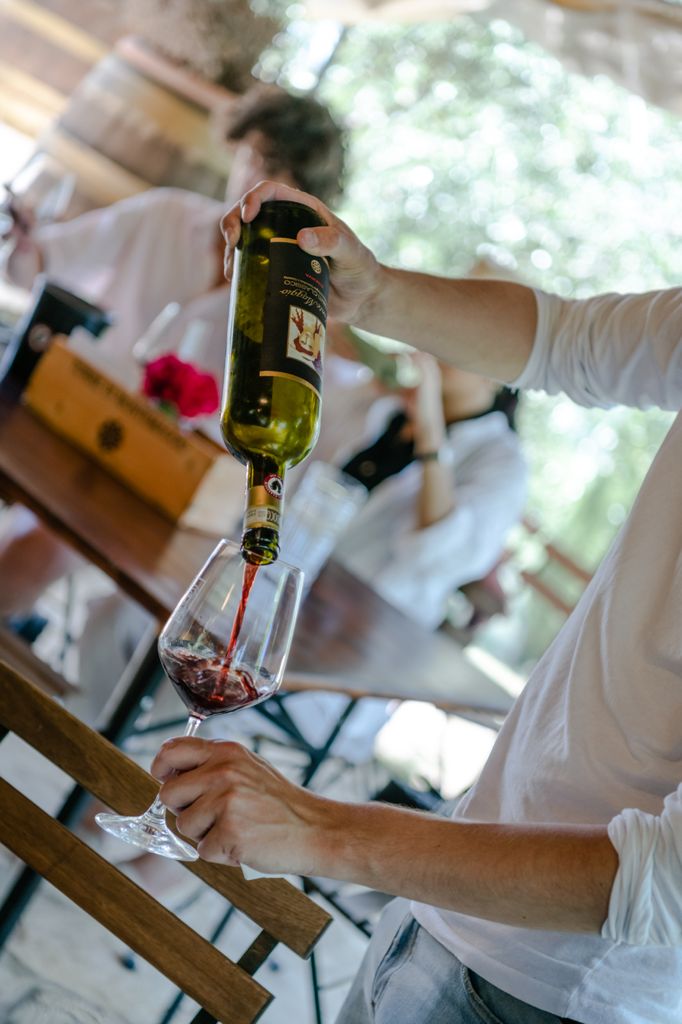
If you are reading this Blog Post most probably you are a wine lover, and as a wine lover more than once you would have asked yourself how you perceive certain smells in a specific wine.
You surely asked yourself where Wine’s Aromas come from.
What mechanism is behind them?
At the end of the day those unique flavors we can perceive in a wine are simply molecules.
They enter the nose, hit olfactory receptors and generate a signal which is sent to our brain.
So simple and yet so complex. Tiny molecules lighter than air float towards our olfactory receptors.
Well, now the question now is simple-Where can find this molecules in the first place? And moreover, what are made of this molecules?
These molecules are nothing else than tiny little clusters of carbon atoms generated during the growth of grapes, alcoholic and malolactic fermentation and, of course, during wine aging as well.
We can divide aromas in three types or in case you want three macrocategories
Primary Aromas, also known as varietal aromas: these aromas directly depend directly on the grape used to make the wine. These aromas will remind you then fruit.
Secondary Aromas: Aromas associated to microbial respiration (for example yeast eating sugars and “off-gassing” aromas). In this case, this type of aromas will often remind of flowers or in other cases aromas more tending to herbaceous.
Tertiary or Aging Aromas: Aromas derived from the degradation of chemical compounds with time, temperature and oxygen.
After this brief introduction, let’s try to analyze specifically all the three macro-categories.
Primary Aromas
Let’s start with the so called “Primary ones”.
They are also called varietal aromas because they are exclusively connected to the intrinsic characteristics of the grape, to the innate characteristics of the grape. Therefore the closer we are to the moment of harvesting (the younger a wine is) the more the perceivable aromas will be ascribable to the category of primary aromas.
These kind of odorous molecules are mainly present in the skin of the grape and most of them belong to the category of terpenes.
It is very important to remember there are three main families of grapes.
Aromatic grapes including: Gewuztraminer, Malvasia, Muscat. Semi-aromatic grapes include: Merlot, Cabernet Sauvignon, Lagrein, Riesling, Sauvignon Blanc, Chardonnay, Glera. While the third and last “family” is represented by neutral grapes – the Prince of neutral grapes is surely our beloved Sangiovese.
Secondary Aromas
Let’s now discuss about all those aromas which are formed during fermentation.
During alcoholic fermentation, yeasts called Saccharomyces cerevisiae transform grape’s sugars into carbon dioxide and ethyl alcohol. We must emphasize how the types of yeasts used, the conditions of fermentation and the style choices made during the fermentation process, contribute in a very important way to the variety of secondary aromas released.
These aromas can be divided in three distinct groups.
We can therefore talk about fermentative aromas which give aromas of bread crumbs, livestock or cookie. Then we have lactic aromas – notes of butter, milk or caramel. Lastly, we must talk about amyl aromas. One of the most particular scents belonging to this category of aromas is nail polish or banana. It should be said these hints of banana, typical in young wines and in particular in very young white wines, are something mainly due to a type of carbonic maceration. Everything that will happen during fermentation will massively influence what will be the final condition of the aromatic stratification of our wine.
Tertiary Aromas
We will now finally talk about aromas for aging. Perhaps the most discussed macro-category.
During the aging period, wine evolves in an important way.
It is always important to remember this kind of aging takes place both in oak casks and in bottles. Wine will gradually acquire a more and more complex character. A unique evolution which will be the product of the polymerization reactions of anthocyanins and tannins, as well as the interaction between wine and cask and between wine and environment. There are a series of aromas called oxidation aromas which develop when there is air passage for example
Wood vats, barrels and casks on the other hand impart woody aromas such as oak, vanilla or toasted. They can also impart spicy aromas such as cinnamon, licorice or pepper, or empyreumatic aromas such as coffee, tobacco, dark chocolate or toasted bread.
With the aging instead in the bottle, especially the “very long” aging. The boquet of our wines evolves and for example in red wines will appear atypical and unique aromas. Animal aromas, such as leather in Sangiovese, or game meat or fur in extremely aged wines. White wines instead will show aromas which are obviously different. Dry flowers, aromas reminiscent of paint.
And what about fruity notes? Well it must be said fruit notes will evolve. For example in reds we will have a prevalence of dried fruit. In whites, instead, the just ripe fruit will leave space to notes which will remind, for example, dehydrated fruit, prune or black cherry in some cases (it also depends by the grape in question).
Conclusions
It is important however to remember the perception we have of these aromas, that is how they are translated by our brain, is something extremely personal. The name we will give to what we perceive will always be related to something personal, unique and probably also connected to our childhood experiences.






Leave a Reply